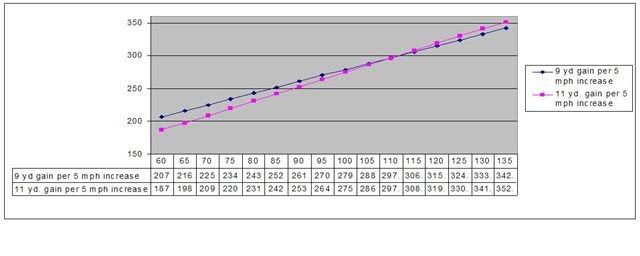TomPaul,
I read your posts above and it is all very interesting, and helps explain how we got to where we are today, but unless I am missing something it doesnt really address the impact on the game of different balls at different swing speeds.
To say that the increase is linear without explaining what that means does not really put the issue of apparent explosiveness to rest. We at least need to know just what exactly they are calling linear. Are they comparing . . .
-- incrimental mph increases to actual distance increases?
-- percentage mph increases to percentage distance increases?
-- incrimental mph increases to percentage distance increases?
-- percentage mph increases to actual distance increases?
For example, the 3rd method might produce a linear result, but the actual distance increases will not necessarily be linear.
Also, realize that whatever method they use, the slope of the line is crucial when we start comparing balls. Even if the increases are linear (by whatever method.) How much increase are different balls getting for similar speed increases?
For hypothetical example, using the first method above, here is a chart for two hypothetical balls. One ball increases 9 yards per 5 mph increase in swing speed, the other increases 11 yards per 5 yd increase in swing speed.

Note that the second ball gives much more benefit for a higher speed swinger and actually hurts the slower swing golfer, relative to the first ball.
Note also that both balls likely comply at the old standard (296.7 yds at 109 mph) and the new proposed (320 yds at 120 mph.)
Note also that is hypothecal. I dont know if these numbers are reasonable or even possible, but you can see that, theoretically at least, one can have a linear progression and still provide a much greater benefit to the higher swing speed golfer.